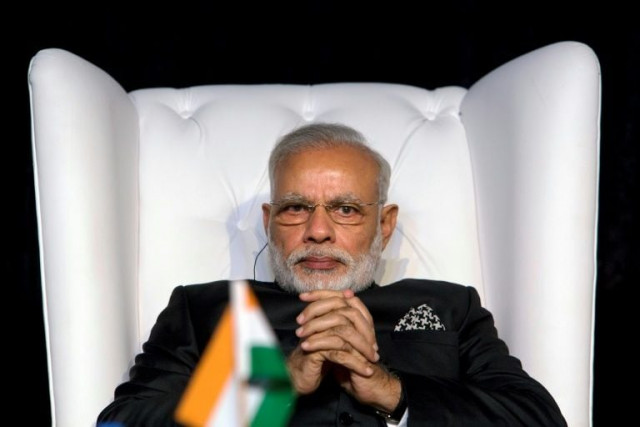Here's what India's suspension of Indus Waters Treaty means for Pakistan
The IWT has long anchored India-Pakistan ties, enabling shared access to critical river water resources.

For over six decades, India and Pakistan have cooperatively managed the waters of the Indus River system, a vital resource for both nations. Despite enduring conflicts, the Indus Waters Treaty (IWT) of 1960 has remained a cornerstone of their bilateral relations, facilitating shared access to water resources.
However, recent developments have strained this longstanding agreement. In the wake of a deadly attack in Pahalgam, Indian-administered Jammu and Kashmir, which resulted in 26 tourist fatalities, India announced the suspension of the IWT.
India's Ministry of External Affairs Secretary, Vikram Misri, stated, "The Indus Waters Treaty of 1960 will be held in abeyance with immediate effect, until Pakistan credibly and irrevocably abjures its support for cross-border terrorism."
What is the Indus Waters Treaty?
The origins of the IWT can be traced back to the Partition of British India in August 1947, when India and Pakistan became two independent nations. Both countries, now home to over 1.6 billion people, have historically relied heavily on the rivers flowing from the Himalayas for irrigation and agriculture.
The division of the Punjab province, which was extensively developed under British rule with an integrated irrigation system, created an immediate need for an agreement on the equitable sharing of the river waters between India and Pakistan. This was essential to prevent any future conflicts over this vital resource, particularly given that the new border separated the territories through which these rivers flowed.
After nine years of negotiations, facilitated by the World Bank, the IWT was signed in September 1960 by then-Indian PM Jawaharlal Nehru and former Pakistani president Ayub Khan. India was given control over the three eastern rivers—Ravi, Sutlej, and Beas—while Pakistan was assigned control over the three western rivers—Indus, Jhelum, and Chenab. As part of the treaty, India is required to allow the waters of the western rivers to flow into Pakistan, with only a few exceptions.
The treaty also allows India to develop hydroelectric projects on the western rivers, but these projects must adhere to strict conditions. They must be "run-of-the-river" projects, meaning that they cannot significantly alter the flow or storage of water, ensuring that Pakistan’s water rights as the downstream riparian country are not adversely affected.
How the Treaty Works
At the heart of the ongoing dispute between India and Pakistan lie the design features of two Indian hydroelectric power projects: the Kishenganga (330 megawatts), inaugurated in 2018, and the Ratle (850 megawatts), which remains under construction. Although neither project is being financed by the World Bank, both have drawn objections from Pakistan over alleged violations of the Indus Waters Treaty (IWT).
The crux of the disagreement concerns whether the technical specifications of these plants infringe upon the Treaty’s stipulations. Both projects are situated in India, on tributaries of the Jhelum and Chenab rivers—rivers which, along with the Indus, are designated as “Western Rivers” under the IWT.
According to the Treaty, Pakistan has unrestricted use of these rivers, while India is permitted to construct hydroelectric facilities on them under specific conditions. These projects must conform to design constraints outlined in the Treaty’s annexures, ensuring that they are "run-of-the-river" and do not significantly alter water flow or storage to Pakistan’s detriment.
How Will It Impact Pakistan?
The Indus Waters Treaty grants India limited rights to develop hydroelectric projects on the western rivers—Jhelum, Chenab, and Indus—through "run-of-the-river" schemes.
These are designed to generate electricity without significantly altering the natural flow or storage of water. While this provision allows India a degree of development, the treaty also safeguards Pakistan’s interests by allowing it to raise objections to any design that may affect downstream water flow.
Pakistan, which receives roughly 80 per cent of the water in the Indus river system, relies heavily on these rivers. Of the 16.8 crore acre-feet of water in the system, India is allocated around 3.3 crore acre-feet. At present, India uses slightly more than 90 percent of its permitted share, leaving Pakistan deeply dependent on the remainder.
This dependence is profound. The Indus river network—comprising the Jhelum, Chenab, Ravi, Beas, and Sutlej—forms the backbone of Pakistan’s agricultural sector. It sustains a population of tens of millions, fulfilling 23 per cent of the country's agricultural water needs and directly supporting nearly 68 per cent of rural livelihoods.
Any disruption to this supply could trigger widespread consequences: reduced crop yields, food insecurity, and further economic instability, particularly in regions already burdened by poverty and an ongoing financial crisis.
Compounding the issue is Pakistan's limited water storage capacity. Major dams such as Mangla and Tarbela have a combined live storage of just 14.4 million acre-feet (MAF)—a mere 10 percent of the country’s annual entitlement under the treaty. In times of reduced water flow or seasonal variability, this shortfall in storage leaves Pakistan acutely vulnerable.
What Are India’s Rights Under the Treaty?
Despite Pakistan’s heavy reliance on the Indus waters, the treaty does afford India certain rights. It allows the development of 13.4 lakh acres of irrigation in Jammu and Kashmir and Ladakh. However, as of now, only 6.42 lakh acres are being irrigated in these Union Territories. Furthermore, the treaty permits India to store up to 3.60 million acre-feet of water from the western rivers—although little to no such storage infrastructure currently exists in Jammu and Kashmir.
India is also entitled to build run-of-the-river dams on the Jhelum, Chenab, and Indus. While these are not meant to obstruct water permanently, the technical leeway they offer enables India to temporarily restrict flow—giving it a strategic edge in times of diplomatic tension.
Relations between the two nations took a marked downturn after India revoked Jammu and Kashmir’s special autonomy in August 2019. Since then, trust between New Delhi and Islamabad has eroded further. In this increasingly volatile geopolitical climate, many experts argue that the most viable path forward is a return to the cooperative spirit in which the treaty was originally signed.





















COMMENTS
Comments are moderated and generally will be posted if they are on-topic and not abusive.
For more information, please see our Comments FAQ